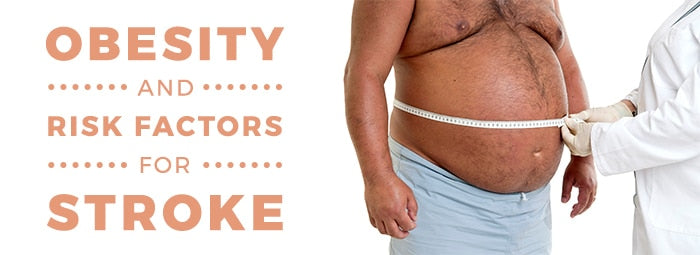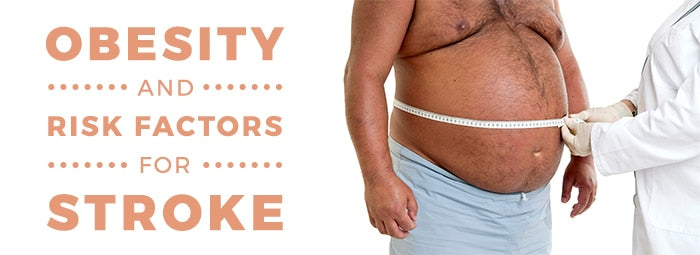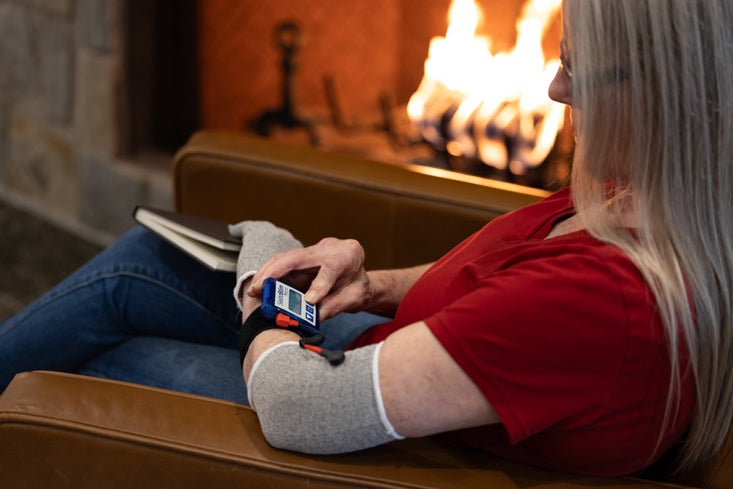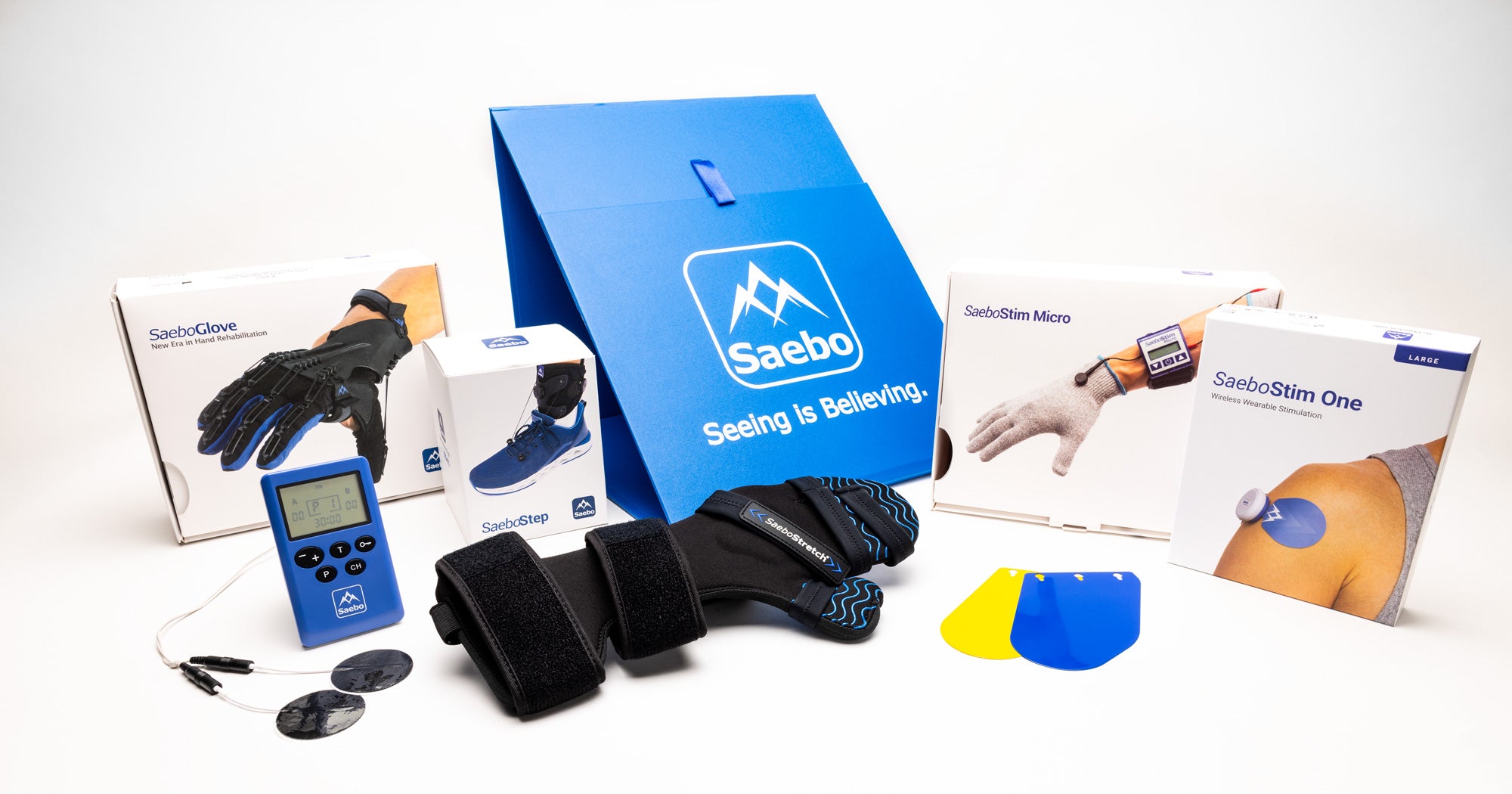
Obesity and Risk Factors for Stroke

Just as smoking a cigarette can increase your chances of having lung cancer, being overweight can greatly increase your chances of having a stroke. Because of excess fat in the body, inflammation is likely to occur, which causes poor blood flow and potential blockages—two major causes of stroke.
When considering extra weight on its own, there are significant correlations between obesity and Transient Ischemic Attacks (TIAs), aside from other vascular complications. TIAs, also known as “mini-strokes,” shouldn’t be considered as minuscule on account of their name. On the contrary, these attacks are early warning signs of a potential major stroke. According to an article published in Medical News Today, “It is estimated that up to 500,000 people in the United States experience a TIA each year,” and up to 15 percent of those people “have a full-blown stroke within 3 months.”
With these daunting statistics, understanding the relationship between obesity and strokes is extremely important, and learning how to manage it can be life saving.
Obesity and Secondary Risk Factors of Stroke
What many people may not realize is that strokes are ranked as the fifth leading cause of death in the United States, with nearly 800,000 people dying every year. Considering how serious a threat stroke is, learning about its secondary risk factors and how to prevent them can make a world of difference for you or a loved one. Some of these factors include:
-
High Blood Pressure (Hypertension): The heart exerts heightened levels of force to pump blood throughout the body, which can lead to severe health issues—heart failure, atherosclerosis, stroke, and kidney disease. Although the actual cause of high blood pressure is unknown, studies have shown that there are a number of factors that cause it, and obesity serves as one of its major contributors.
-
Sleep Apnea: Someone experiences a pause or series of pauses in breathing while asleep. These pauses have the potential to last between a few seconds to a few minutes and can occur multiple times during a night, resulting in poor sleep quality. Unfortunately, this disorder goes widely unrecognized in those who suffer from it, but usually those with high blood pressure will exhibit signs of it. A sleep partner may be able to detect if there are disruptions in your sleep patterns.
-
Diabetes: For our body’s cells to get the energy they need, insulin is needed to regulate the process of converting sugar into energy. Diabetes occurs when the body is no longer able to produce or react to insulin. This impairment results in an unusual metabolism of carbohydrates, as well as an increase of glucose within the blood and urine. Diabetes has a major correlation with stroke because the amount of glucose in the body is not combined with proper amounts of insulin for sufficient energy distribution to the cells. Eventually, the condition will form deposits and clots on the walls of blood vessels, which can lead to a cutoff of blood supply or oxygen to the brain. Those with diabetes alone are three times more likely to suffer from a stroke than those without it.
-
Left Ventricular Hypertrophy (LVH): LVH is a condition in which the left pumping chamber of the heart becomes enlarged from over exertion. Basically, as the heart works harder to pump blood throughout the body, its muscle tissue within the ventricle thickens. Over time, the expansion of the chamber wears out the elasticity in the muscles, which may cause the heart to fail altogether.
Minimizing Risk of Stroke
After learning about the seriousness of obesity and secondary risk factors associated with a stroke, it’s important to remember that making a transition to a healthy lifestyle can greatly reduce these complications from happening.
The best way to start the transition is to implement a healthy diet and workout routine. According to the American Heart Association, adults should receive at least 150 minutes of exercise each week at an average level. For those with a more active mindset, that number can be cut down to 75 minutes at a vigorous level. Keep in mind, there are a number of ways to burn calories—walking, running, cycling, swimming, yoga, aerobics—so feel free to choose something that interests you and keeps you motivated!
When it comes to eating better, choosing a diet that is low in fat and high in fiber is a good way to start. The University of Maryland Medical Center suggests that incorporating more fruits, vegetables, and nuts, combined with oily fish—salmon, trout, and mackerel—will lower the odds of heart disease significantly. In addition to these foods, it is best to stay away from things like red meat and dairy products, which are high in cholesterol and saturated fats. Here are some tools to make cooking after stroke a little easier.
Ultimately, these tips will help lower your body mass index (BMI) and waist-to-hip-ratio (WHR), which are two ways to monitor your progress. BMI refers to the amount of body fat one has in relation to their weight and height, whereas WHR takes into consideration the size of the waist (abdomen) in inches compared with the size of the hips in inches. When looking at these measurements for men and women, those with a WHR of 1.0 or greater are at risk for health complications like heart disease and stroke, so keeping an eye on these numbers is a good way to stay on top of your game.
Obesity and Recovery After Stroke
While recognizing potential risk factors and pursuing a healthier lifestyle can prevent a stroke, sometimes the warnings come too late and a stroke occurs. If this is the case for you or a loved one during a battle with obesity, there are several things to be aware of during the recovery process.
For starters, patients dealing with obesity are less likely to be released to their homes and are instead transferred to a rehabilitation center or nursing home. This is done to ensure proper care for the patient while incurring less expenses because obese patients will require more time in the hospital to recover as opposed to those who aren’t overweight.
Physical components such as endurance, balance, and movement become greater issues for those with obesity, and the addition of a stroke can add on further complications. Studies show that stroke survivors with weakness or spasticity in one or both legs are more likely to require the use of a wheelchair than a survivor that is not obese.
Your Health is Priority #1
Without the possibility of stroke included, taking control of obesity is already a difficult task. Life gets busy, and other priorities begin to overshadow the most important priority of them all: your health. By realizing that losing weight and eating a healthy diet are the key ingredients to minimizing the possibility of a stroke, your chances of a better and faster recovery are far greater if one happens.
Above all else, trust that you or a loved one has the power to make a positive change, and that obesity management and stroke prevention can be accomplished simultaneously.
All content provided on this blog is for informational purposes only and is not intended to be a substitute for professional medical advice, diagnosis, or treatment. Always seek the advice of your physician or other qualified health provider with any questions you may have regarding a medical condition. If you think you may have a medical emergency, call your doctor or 911 immediately. Reliance on any information provided by the Saebo website is solely at your own risk.
All content provided on this blog is for informational purposes only and is not intended to be a substitute for professional medical advice, diagnosis, or treatment. Always seek the advice of your physician or other qualified health providers with any questions you may have regarding a medical condition. If you think you may have a medical emergency, call your doctor or 911 immediately. Reliance on any information provided by the Saebo website is solely at your own risk.



